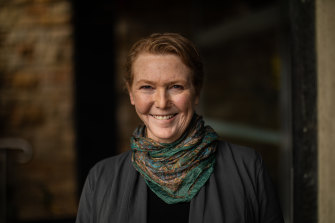Key points
- Young Australians have reported far higher levels of psychological distress than any other age group with the census capturing the upheaval and mental toll of living through a pandemic.
- One in five Australians aged 16 to 34 years reported “high or very high levels of psychological distress” more than twice the rate of those aged 65 to 85 years.
- Experts warn the true extent of chronic disease was far higher in Australia than reflected in the census, which only collected self reported and diagnosed conditions.
Young Australians have reported far higher levels of psychological distress than any other age group, with the census capturing the upheaval and mental toll of living through a pandemic.
The first tranche of census data released on Tuesday provides a snapshot of the state of health in Australia, revealing that one in five Australians aged 16 to 34 years reported “high or very high levels of psychological distress”. That’s more than twice the rate of those aged 65 to 85 at 9 per cent.
Jane Fisher, a professor of global health at Monash University, said the data, which showed more than 2.2 million Australians now had a diagnosed mental illness, was “shocking and perplexing.”
“It raises some really important questions, one being: just how much of this is a reflection of our COVID situation?” she said. “It is almost impossible to answer this directly because we have never asked this question before in a census.”
Fisher, who has researched the mental health toll on Australians during the pandemic, said the findings mirrored results of other coronavirus surveys, in which young people were continually found to experience more severe symptoms, including elevated levels of distress.
“It has been linked to having lost a job and very importantly, young people not being able to engage with the purposeful things they’ve otherwise been doing,” she said.
One in five Australians aged 16 to 34 years reported high or very high levels of psychological distress, according to the latest census data.Credit:iStock
Fisher said younger Australians had also experienced “the particularly terrible impact of loneliness,” often living alone or feeling the social isolation impact more acutely when their work and studies were disrupted.
“They have really felt powerless,” she said.
A further breakdown of the data reveals 3.4 million Australians aged 16 to 85 years – roughly 17 per cent of the population – saw a health professional for their mental health.
Women were also more likely to report “high or very high levels of psychological distress than men”, 19 per cent compared with 12 per cent.
For the first time, the 2021 census also collected information on diagnosed, ongoing health conditions. It found more than 8 million people have a long-term health condition.
While mental health topped the list of chronic diseases, it was closely followed by arthritis, which affected 2.1 million Australians. Asthma was the third most common long-term condition, with more than 2.06 million people reporting a diagnosis.
More than 1.1 million Australians reported a diagnosis for diabetes and 999,000 people reported a long-term heart disease diagnosis. More than 732,000 people experienced a cancer diagnosis of more than six months or were in remission from the disease.
Asked if the pandemic had influenced the results of chronic diseases in the census, Professor of public health at the University of Melbourne’s School of Population and Global Health Rob Moodie said the answer was a resounding yes.
He said physiological distress was often a factor in exacerbating chronic diseases.
“Social connection is an incredibly important part of our overall health,” Moodie said. “It’s as important as weight and smoking. It’s far more important than we ever give it credit for as a protective or preventative factor in things like cardiovascular disease.”
Not captured in the census was the toll of pandemic fuelled delays in accessing medical care. Moodie was concerned about the thousands of Australians who had experienced delayed screenings for life-threatening conditions such as cancer, which plummeted in the early stages of the pandemic.
“That is definitely going to come,” Moodie said.
Jo Hall received a delayed oral cancer diagnosis after a persistent toothache, brushing off her symptoms as she adjusted to pandemic conditions.Credit:Scott McNaughton
Victorian woman Jo Hall is one of the thousands of Australians who had received a delayed cancer diagnosis. Her toothache lasted for a year before she was diagnosed with oral cancer.
Working at home in her public service job during the 2020 and 2021 Melbourne lockdowns, Hall said she “brushed off her symptoms” due to the turbulence of adjusting to pandemic conditions.
Initially, the 58-year-old was told by her dentist that a wisdom tooth was causing her persistent toothache. But eight months later, she was still experiencing mouth pain. She noticed a growth in her gum cavity and returned to the dentist, who referred her to an oral surgeon.
“I think the dentist knew then it was cancer,” said Hall, who is now recovering from the disease. “What started as something that wasn’t important, suddenly became the most important thing.”
On August 10 last year, millions of people across Australia were asked to disclose any long-term health issues from a list of nine conditions – arthritis, diabetes, heart attack, asthma, lung or kidney disease, stroke, cancer and mental health.
“It’s a really smart move to collect this data,” Moodie said. “Throughout the pandemic we’ve been talking about communicable diseases that are potentially fatal and happen very quickly. This is completely the opposite of the major other pandemics of chronic disease that have been going on in our world for the last 20 years.”
He warned the true extent of chronic disease was probably far higher in Australia than reflected in the census.
“There would be more cases of high blood pressure or diabetes that people just don’t know about yet,” Moodie said.
Before winning the federal election, the Labor Party committed to establishing an Australian Centre for Disease Control, promising the dedicated body would have capacity to monitor current and emerging threats and work with state governments and medical providers to prepare for the next crisis.
Moodie said centre should also deal with longer term, non-communicable diseases, which are leaving millions of Australians in chronic pain and causing them to die early.
“Whether it is cancer, heart disease, musculoskeletal problems or diabetes, these are the issues that take years on people’s lives,” he said.
The Morning Edition newsletter is our guide to the day’s most important and interesting stories, analysis and insights. Sign up here.
Most Viewed in National
From our partners
Source: Read Full Article



